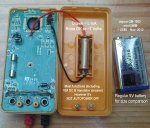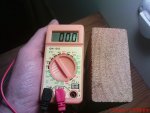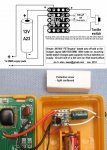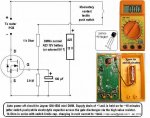Perhaps of most interest to Kiwi/Aust. readers? Jaycar have new QM-1502 mini DMMs back in stock,at a throw away ~Aust$5. It's hard to know if one should laugh or cry at such trivial prices -I recall (as an early teen) paying ~$500 in todays money for a far inferior meter...
The QM-1502 build is suprisingly good, & current drain an astoundingly low ¼ mA from the A23 12V battery. Aside from their skinflint & toolbox spare appeal, they also suit use as an inbuilt panel meter. But with no auto power off the prospect of flat batteries limits their schools use. Educators who've found their class meter batteries dead mere minutes before 30 surly youths arrive for a lab session will appreciate this particular "electro-angst"...
Right then Forum Brains Trust, the challenge is out to suggest a COST EFFECTIVE autopower off circuit to enhance them.
The QM-1502 build is suprisingly good, & current drain an astoundingly low ¼ mA from the A23 12V battery. Aside from their skinflint & toolbox spare appeal, they also suit use as an inbuilt panel meter. But with no auto power off the prospect of flat batteries limits their schools use. Educators who've found their class meter batteries dead mere minutes before 30 surly youths arrive for a lab session will appreciate this particular "electro-angst"...
Right then Forum Brains Trust, the challenge is out to suggest a COST EFFECTIVE autopower off circuit to enhance them.
Attachments
-
53.3 KB Views: 75
-
375.4 KB Views: 93






